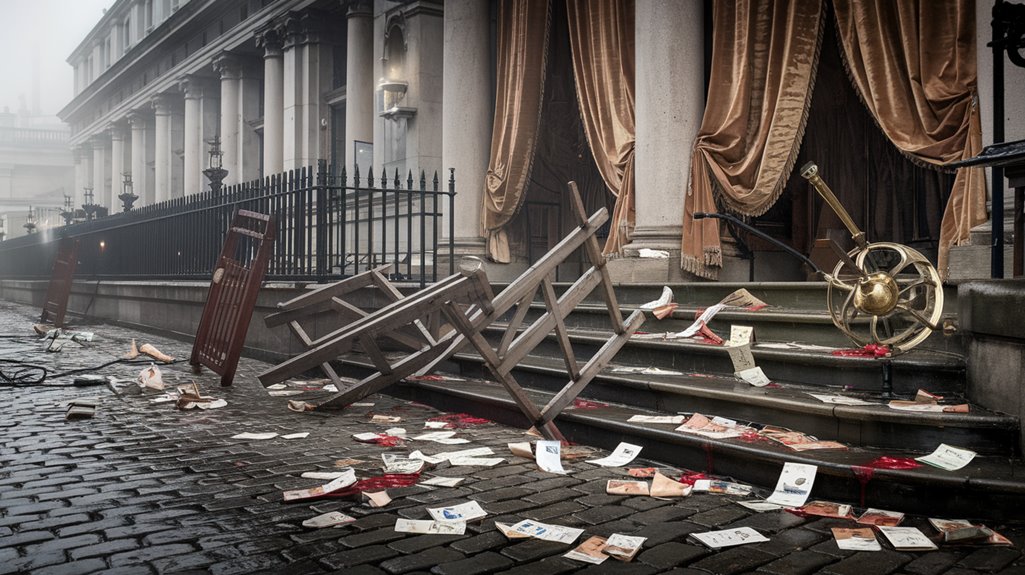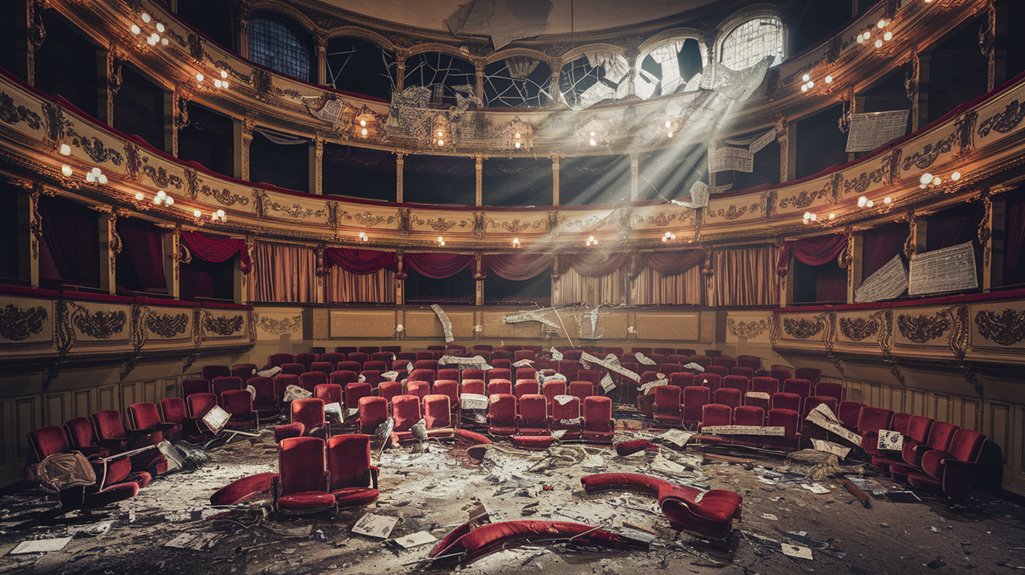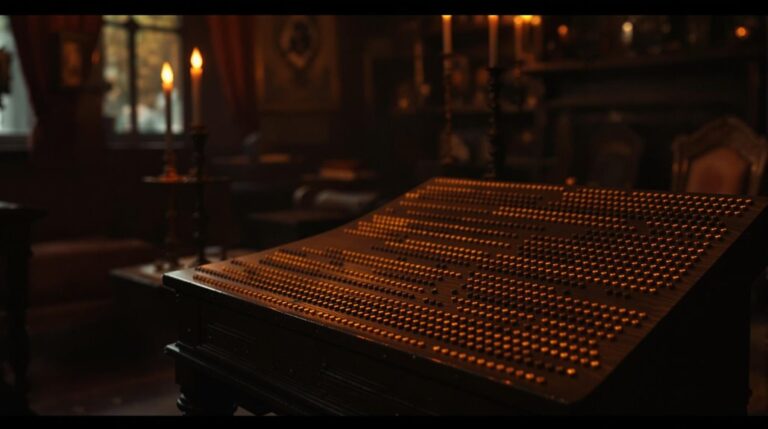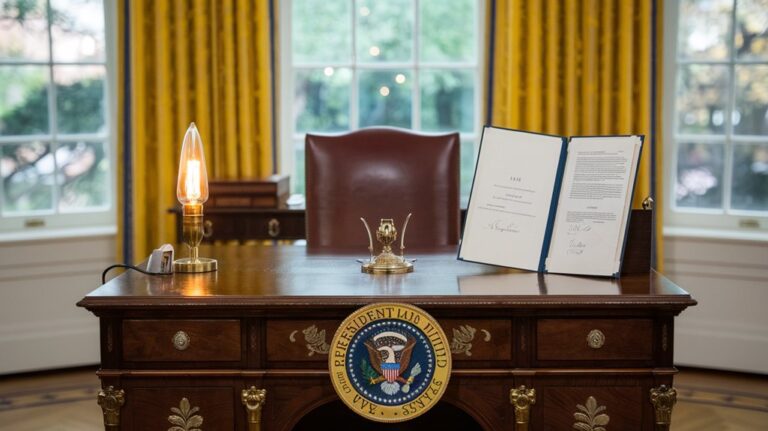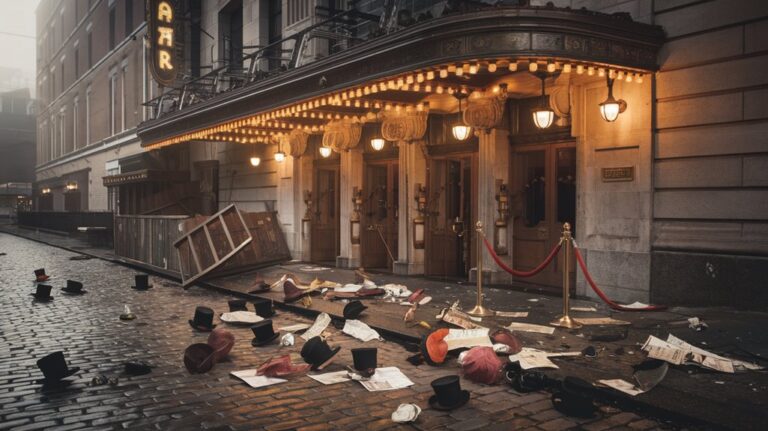Rioting Over Ticket Prices: Britain’s 19th-Century Theater Meltdown
Did you know that in 1809, a single theater ticket could cost the equivalent of a week's wages for the average London worker? You'll find it's not surprising, then, that when Covent Garden Theatre hiked its prices even higher, the public's patience snapped. What followed wasn't just a simple protest – it became a 64-day saga of chaos, celebrity intervention, and cultural rebellion that would change how Britain's theaters operated for decades to come.
The Spark That Ignited the Theater Protests
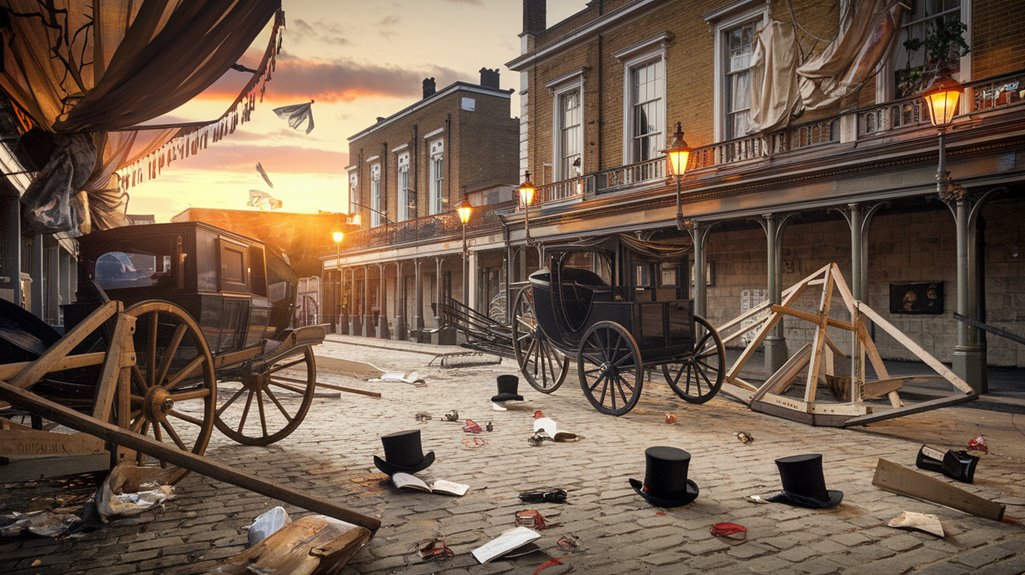
When the original Covent Garden Theatre burned down in 1808, its reconstruction sparked one of the most significant theater protests in British history.
You wouldn't believe how a simple price increase ignited such intense class conflict. The theater's management raised box prices from six to seven shillings and pit prices from three-and-six to four shillings, while introducing exclusive private boxes at £300 per year. The decision to convert public galleries into these private boxes particularly outraged regular theatergoers.
The protest strategies began on opening night, September 18, 1809, during a performance of Macbeth. During this turbulent period, the theater scene was already evolving as actor-managers like Charles Kean dominated London's stages.
After the national anthem, the audience erupted with shouts of "Old Prices!" The chaos lasted until 2 am, despite attempts by magistrates to restore order.
Even soldiers couldn't quell the uprising, marking the beginning of a three-month battle over theater accessibility in London.
Economic Turmoil and Public Discontent
As Britain grappled with the financial strain of the Napoleonic Wars, the economy faced mounting pressures from a weakening pound and soaring costs.
You'd find economic inequality intensifying across the country, particularly affecting London's working class, who couldn't afford basic necessities, let alone entertainment.
When Covent Garden Theatre raised its ticket prices, public protests erupted with unprecedented force. Middle class patrons voiced their outrage at the increased box prices, which jumped from six to seven shillings.
For 64 days, you'd witness businessmen and laborers alike joining forces, carrying banners and even a symbolic coffin through the streets. This period of unrest eerily foreshadowed the mass demonstrations that would later emerge during the Reform League protests of 1866.
Their creative, non-violent tactics spoke volumes about their determination to fight against what they saw as economic injustice.
The theater's management eventually caved to public pressure, lowering prices and issuing an apology – a rare victory for ordinary citizens during a time of severe economic hardship.
Three Months of Theatrical Chaos
The burning of Covent Garden Theatre in 1808 set off a chain of events that would ignite London's most dramatic public protest.
When the theater reopened in 1809, you'd have witnessed an unprecedented display of public engagement as patrons rebelled against increased ticket prices and reduced accessibility.
Theater culture transformed into a battleground for three chaotic months. The replacement venue had been built with privileged box seats on the third tier.
The catastrophic fire caused an estimated £250,000 in damages, forcing management to seek new funding solutions.
- Protesters brought drums, whistles, and frying pans to drown out performances
- The "OP dance" became a nightly ritual of stomping and chanting
- Rioters paraded a coffin declaring the "death" of new prices
- Former boxing champion Daniel Mendoza was hired to control the crowds
Despite attempts to justify the price hikes and deploying the Bow Street Runners, management couldn't quell the unrest.
The chaos only ended when John Philip Kemble publicly apologized and restored the old prices in December 1809.
Key Players in the Price War
Leading the theatrical upheaval of 1809, John Philip Kemble sparked London's most contentious price war after raising ticket prices at the newly rebuilt Covent Garden Theatre. His theater management decision to increase box seats from six to seven shillings and pit prices by sixpence ignited fierce public sentiment.
You'll find it fascinating that the protesters, known as OP (Old Price) rioters, came from diverse social backgrounds. They effectively disrupted performances for three months straight, armed with banners and even a mock coffin.
What made matters worse was the timing – Britain's economy was struggling due to the Napoleonic Wars, with a weakened pound and rising costs. Kemble's hiring of an Italian opera singer only fueled the protesters' xenophobic feelings. Due to strict regulations at the time, Covent Garden was one of only two theaters permitted to perform regular drama in London.
Eventually, he'd to cave to public pressure and restore the original prices.
From Boxing Champions to Royal Intervention
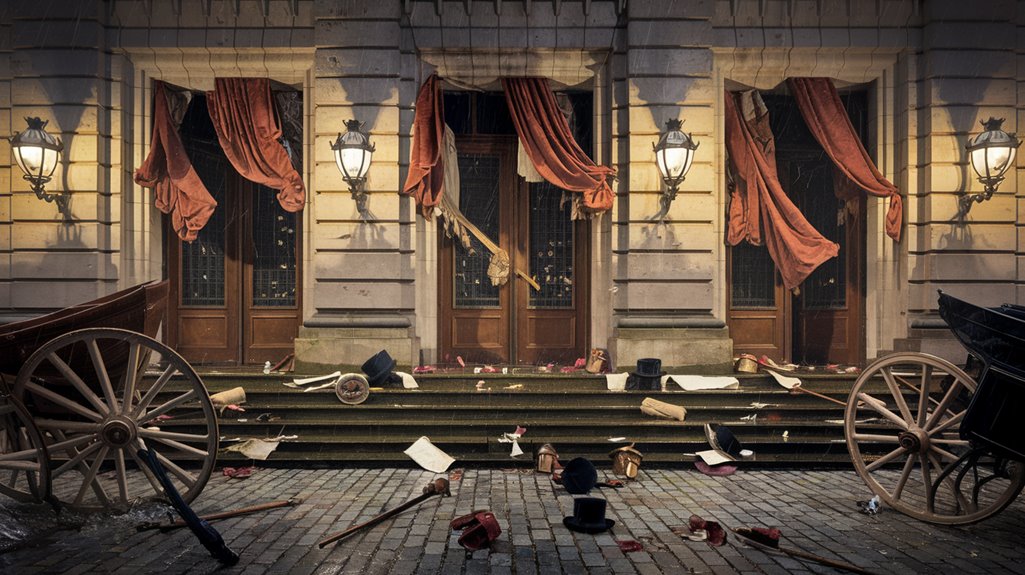
Desperate to control the mounting chaos, theater management made the ill-fated decision to hire professional boxers as security forces. This strategy backfired spectacularly, leading to further humiliation and intensifying the protests.
Just like modern theaters offering up to £10 for rush tickets every Friday, the historical protesters had their own creative ways to challenge ticket pricing. These demonstrations, much like public intellectual discourse, sparked important debates about accessibility and fairness. You'd be amazed by the theatrical tactics protesters employed during their 67-night campaign:
- Mock fights and choreographed dances to mock the management
- Creative banners and placards displaying their grievances
- Specially designed fake currency and OP medals
- Coordinated singing and chanting throughout performances
Despite the scale of these protests, you won't find any record of royal intervention – this royal indifference only strengthened public support for the protesters' cause.
What's remarkable is how civil these demonstrations remained, with minimal violence or property damage, even as participants effectively disrupted performances night after night.
The Victory of Public Opinion
After months of sustained protests, public opinion emerged as the decisive force that brought London's theatrical establishment to its knees.
You'd find it remarkable that on December 15th, Kemble finally surrendered to the protesters' demands, restoring the original ticket prices and issuing a public apology.
The victory highlighted the growing public influence over cultural institutions, proving that collective action could achieve meaningful change.

